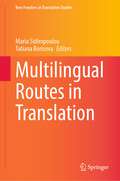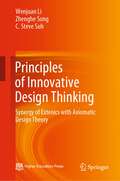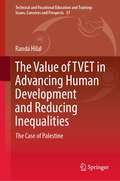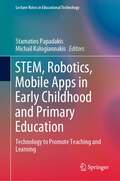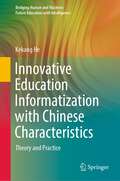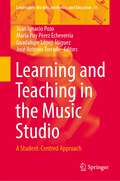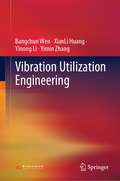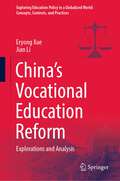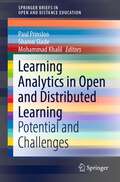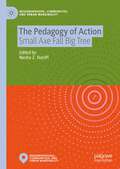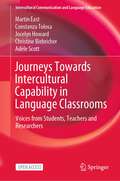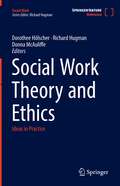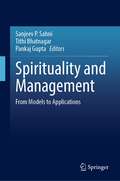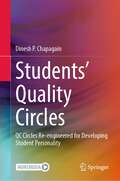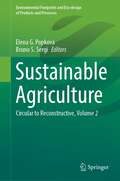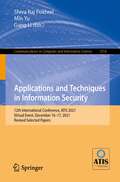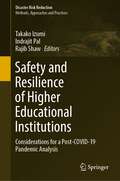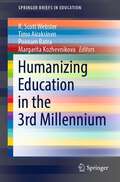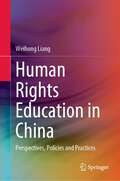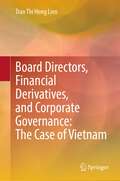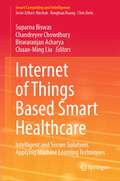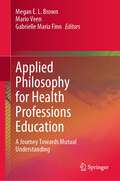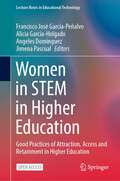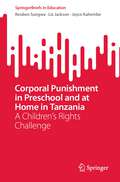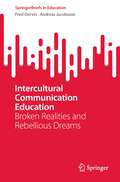- Table View
- List View
Multilingual Routes in Translation (New Frontiers in Translation Studies)
by Maria Sidiropoulou Tatiana BorisovaThis book tackles the interface between translation and pragmatics. It comprises case studies in English, Greek, Russian and Chinese translation practice, which highlight the potential of translation to interact with pragmatics and reshape meaning making in a target language in various pragmatically relevant ways. Fiction and non-fiction genres merge to suggest a rich inventory of interlingual transfer instances which can broaden our perception of what may be shifting in translation transfer. Authors use an emic approach (in addition to an etic one) to confirm results which they often present graphically. The book has a didactic perspective in that it shows how pragmatic awareness can regulate translator behaviour and is also useful in foreign language teaching, because it shows how important implicit knowledge can be, in shaping the message in a foreign language.
Principles of Innovative Design Thinking: Synergy of Extenics with Axiomatic Design Theory
by Wenjuan Li Zhenghe Song C. Steve SuhThe book presents a comprehensive treatment on a novel design theory that fosters innovative thinking and creativity essential for addressing wicked problems. Wicked problems are ill-defined, ambiguous in both aims and solutions, and complex with interconnected and intertwined (coupled) factors. While being ubiquitous and difficult, however, wicked problems share characteristics common to science and design in three regards, namely agent finitude, system complexity, and problem normativity. These fundamental attributes allow a core cognitive process common to design and science to be identified and a strategic problem-solving conception of methodology be formulated as a result. The theory facilitates new opportunities for synergetic cross-disciplinary research and practice by incorporating the essences of Extenics to axiomatic design. Innovative thinking is enabled by exploring Extenics for problem reframing, paradigm shift, and abductive reasoning and by engaging axiomatic design in the co-evolution (iteration) of the need and viable design concept. The theory is unique in that it is a framework for quantifying imprecise and vague design information available during the conceptual design stage as mathematical expression and algorithm early in the design effort and enables the objective evaluation and emergence of an optimal design concept from among multitude of viable ones. The book is conceived for students and real-world practitioners in engineering, natural and social sciences, business, and fine arts who seek to develop powerful design thinking for solving problems in a creative and innovative way.
The Value of TVET in Advancing Human Development and Reducing Inequalities: The Case of Palestine (Technical and Vocational Education and Training: Issues, Concerns and Prospects #37)
by Randa HilalThis book examines the contribution of Vocational Education and Training to advancing human development and reducing inequality. It uses the example of Palestine as case-study rich in multi-layered inequalities, some of which are experienced in the region and worldwide, while others are specific to adverse conditions. The case of Palestine provides fertile ground for understanding inequality and human development, and for echoing the developed knowledge through to the understanding of Vocational Education and Training and Human Development globally. The book brings original theoretical approaches, evidence of the value of Vocational Education and Training, and contributes to academic debates, as well as provides empirical evidence for practitioners and donor community.
STEM, Robotics, Mobile Apps in Early Childhood and Primary Education: Technology to Promote Teaching and Learning (Lecture Notes in Educational Technology)
by Stamatios Papadakis Michail KalogiannakisThis book brings together a collection of work from around the world in order to consider effective STEM, robotics, mobile apps education from a range of perspectives. It presents valuable perspectives—both practical and theoretical—that enrich the current STEM, robotics, mobile apps education agenda. As such, the book makes a substantial contribution to the literature and outlines the key challenges in research, policy, and practice for STEM education, from early childhood through to the first school age education. The audience for the book includes college students, teachers of young children, college and university faculty, and professionals from fields other than education who are unified by their commitment to the care and education of young children.
Innovative Education Informatization with Chinese Characteristics: Theory and Practice (Bridging Human and Machine: Future Education with Intelligence)
by Kekang HeThis book contains the research of Innovative Education Informatization conducted by researchers from School of Educational Technology, Beijing Normal University since early 1990s. There are three main parts of the book. The first part is about six pillars supporting the theory of Innovative Education Informatization with Chinese Characteristics. Six theories are: 1) Theory of Creative Thinking, 2) New Constructivism, 3) Theory of In-depth Integration of Information Technology and Subjects Teaching, 4) New Theory of Teaching Design, 5) Theory of Children’s Thinking Development, and 6) Language Sense Theory. The second part pays attention to advocating maker education system with Chinese characteristics. The third part focuses on Chinese-style flipped classroom. The book will have profound impact on education informatization.
Learning and Teaching in the Music Studio: A Student-Centred Approach (Landscapes: the Arts, Aesthetics, and Education #31)
by Juan Ignacio Pozo María Puy Pérez Echeverría Guadalupe López-Íñiguez José Antonio TorradoThis book advocates for a radical change in music teaching and learning methods, allowing for a break from the traditional conservatory model still in use in many classrooms. The product of twenty years of interdisciplinary work by musicians, music teachers, and psychologists, the book proposes to place the focus of music education on the students themselves and on their mental and physical activity, with the aim of helping them to manage their own goals and emotions. This alternative is based on a new theoretical framework, as well as numerous real, concrete examples of how to put it into practice with students of different ages and in different environments. This book focuses primarily on teaching instrumental music, but its content will be useful for any teacher, student, musician, or researcher interested in improving music education in any environment, whether formal or informal, in which it takes placeChapters 3, 4, 6 and 18 are available open access under a Creative Commons Attribution 4.0 International License via link.springer.com.
Vibration Utilization Engineering
by Bangchun Wen XianLi Huang Yinong Li Yimin ZhangThis book proposes “Vibration Utilization Engineering,” using harmful vibrations in many cases for energy harvesting. Scope of the book includes, but not limited to, linear and nonlinear system of vibrations, waves (sound wave and light wave), wave motion and energy utilization, the electric–magnetic oscillation utilization in engineering, the phenomena, patterns, and utilization of the vibrations in Nature and human social society. It is all based on the theory of vibration utilization technology and equipment technological process, linear and pseudo-linear vibration, nonlinear vibration. This new subject branch is closely associated with numerus applications in industrial or agricultural production, medical apparatus and equipment and daily life, etc. It could create significant economic and social benefits and provide significant values for society and excellent service for human life.
China’s Vocational Education Reform: Explorations and Analysis (Exploring Education Policy in a Globalized World: Concepts, Contexts, and Practices)
by Eryong Xue Jian LiThis book explores the holistic development of vocational education in Chinese education system. It investigates the vocational education policy development, student development, allocation of teachers’ resources, financial mechanism and system, students’ financial aid, examination and enrollment, private vocational education system, and school-enterprise cooperation. In addition, this book critically examines and epitomizes the contextualized China’s vocational education reform from multiple dimensions. This book also offers an in-depth explorations and analysis of current Chinese vocational education reform comprehensively. This is a highly informative and carefully presented book, providing academic insight for scholars and researchers who are interested and work in research on China’s vocational education reform in China as well as the administrators and stakeholders in Chinese education system and graduate students who majoring in the field of educational policy.
Learning Analytics in Open and Distributed Learning: Potential and Challenges (SpringerBriefs in Education)
by Paul Prinsloo Sharon Slade Mohammad KhalilThis book explores and further expands on the rich history of theoretical and empirical research in open and distributed learning, and addresses the impact of the “data revolution” and the emergence of learning analytics on this increasingly diverse form of educational delivery. Following an introductory chapter that maps the book’s conceptual rationale, the book discusses the potential, challenges and practices of learning analytics in various open and distributed contexts. A concluding chapter briefly summarises the chapters before providing a tentative future research agenda for learning analytics in open and distributed environments.
The Pedagogy of Action: Small Axe Fall Big Tree (Neighborhoods, Communities, and Urban Marginality)
by Nesha Z. HaniffThis is the story of teaching consciousness as a requirement for transformations in social justice. In artful narrative, Nesha Haniff traces her own conscientization as a colonized child in Guyana, exploring the cultural and intellectual forces that shape the creation of the Pedagogy of Action. Drawing from Paulo Freire and Ela Bhatt, participants in POA teach an oral HIV education module to marginalized communities in the USA, South Africa and the Caribbean, as the nexus for dismantling traditional pedagogies of race, gender, service and American hegemony. The many challenges of institutional and cultural obstacles, mainly those that excluded poor and black students from overseas travel, required innovation and persistence. The book features essays written by POA students and South African participants reflecting on their own transformations. These essayists are among the hundreds of participants who, over 15 years, in the practice of radical love, grew the Pedagogy of Action.
Journeys Towards Intercultural Capability in Language Classrooms: Voices from Students, Teachers and Researchers (Intercultural Communication and Language Education)
by Martin East Constanza Tolosa Jocelyn Howard Christine Biebricher Adèle ScottThis open access book presents an account of five teacher educators who, over a two-year period, undertook a research project with five teachers of languages other than English in pre-secondary schools in New Zealand. Their collaborative aim was to develop students’ intercultural capability in the context of learning a new language. The school participants were typical of many in New Zealand’s pre-secondary sector; the teachers had limited language-teaching experience and limited prior knowledge of how to develop the intercultural dimension in their language classrooms, and the students were largely at the beginning stages of learning a new language. The book discusses the findings obtained using a range of data collection methods, including classroom observations, reflective interviews with teachers, and focus groups with students. It documents instances of breakthrough and growth for teachers and students and reveals the problems and tensions. Lastly, it reflects on the lessons learned in the course of this project and speculates on the roles that teacher education needs to play if the goal of intercultural capability is to be better achieved in language classrooms, both in New Zealand and internationally. Of interest to a wide range of stakeholders in the area of education, the book allows readers to gain an understanding of the opportunities of working with teachers through an action–research model, alongside the challenges that this brings and ways in which intercultural capability may be strengthened.
Social Work Theory and Ethics: Ideas in Practice (Social Work)
by Dorothee Hölscher Richard Hugman Donna McAuliffeThis reference work addresses the ideas that shape social work. Much of the social work literature addresses questions of theory and ethics separately, so that the body of thought that is represented in social work scholarship and research creates a distinction between them. However, the differences between these categories of thought can be somewhat arbitrary. This volume goes beyond this simple separation of categories. Although it recognises that questions of theory and ethics may be addressed distinctly, the connections between them can be made evident and drawn out by analysing them alongside each other.Social work's use and development of theory can be understood in two complementary ways. First, theory from the social sciences and other disciplines can be applied for social work; second, considered, systematic examinations of practice have enabled theory to be developed out of social work. These different approaches are usually referred to as 'theory for practice' and 'practice theory'. The advancement of social work theory occurs often through the interplay between these two dimensions, through research and scholarship in the field.Similarly, social work ethics draw on principles and concepts that have their roots in philosophical inquiry and also involve applied analysis in the particular issues with which social workers engage and their practices in doing so. In this way social work contributes to wider debates through advancement of its own perspectives and knowledge gained through practice.Social Work Theory and Ethics: Ideas in Practice offers a unique approach by bringing together the complementary dimensions of theory with each other and at the same time with ethical research and scholarship. It presents an analysis of the ideas of social work in a way that enables connections between them to be identified and explored. This reference is essential reading for social work practitioners, researchers, policy-makers, academics and students, as well as an invaluable resource for universities, research institutes, government ministries and departments, major non-governmental organisations, and professional associations of social work.
Spirituality and Management: From Models to Applications
by Pankaj Gupta Sanjeev P. Sahni Tithi BhatnagarThis book discusses the importance of integrating spirituality from diverse knowledge backgrounds to be effective in its everyday use. Bringing together global experts in the field, this book provides an extensive overview of the various spirituality and management themes, models, approaches, and complexities. The chapters in the book include deliberations upon wisdom from the Bhagwat Gita; Buddha; the impact of spirituality on good governance, quality of life; integrating ethics, human values, happiness; meditation; and linking of spirituality and management and their effect on leadership, and workplace environment. A thought-provoking read for scholars, students, and policy-makers, this book provides an Indian perspective on managing spirituality at work. This book is even more relevant in the post-COVID-19 scenario as it focuses on the holistic development of people and organizations.
Students’ Quality Circles: QC Circles Re-engineered for Developing Student Personality
by Dinesh P. ChapagainThis book explains what Students' Quality Circles (SQC) are, how they function, key constraints and issues in implementation, and possible solutions to make it a valuable co-curricular activity. It showcases how Quality Control Circle (QCC) is reengineered with the sole purpose of prosocial personality development of students at their early age. It is a research outcome which depicts the direction of the education system toward character building rather than only developing knowledge and skills. The logical sequence of presentation of the book is ‘why,’ ‘what,’ and toward the end, ‘how’ SQC in education. The book satisfies four hierarchical levels of readers. The first level is of educationists and national policy makers who may take up SQC as an important approach of the education system in their country for prosocial personality development of students and thereby targeting to produce quality citizens in the future. At the second level are chief executives or managers of educational institutes who may identify the potential of SQC approach for developing the positive personality of their students. Teachers and SQC facilitators are at the third level, and they can use the book to train and educate their students while initiating and promoting SQC activities at their institutes. And finally, at the fourth level obviously are students who may refer to this book from time to time and practice SQC on their own for self-development and empowerment.
Sustainable Agriculture: Circular to Reconstructive, Volume 2 (Environmental Footprints and Eco-design of Products and Processes)
by Elena G. Popkova Bruno S. SergiThis book highlights the environmental footprints and best practices in sustainable agriculture. This second volume includes fifteen interesting chapters that present agriculture in the light of forest conservation, circular economy, climate change, sustainability, food security during pandemics and soil conservation, written by leading experts in the field. It provides and interesting read for researchers, policy makers and professionals in the area of agriculture and economy.
Applications and Techniques in Information Security: 12th International Conference, ATIS 2021, Virtual Event, December 16–17, 2021, Revised Selected Papers (Communications in Computer and Information Science #1554)
by Shiva Raj Pokhrel Min Yu Gang LiThis book constitutes the refereed proceedings of the 12th International Conference on Applications and Techniques in Information Security, ATIS 2021, held as a virtual event in December 2021. The 9 full papers along with the 5 short papers presented in the volume were carefully reviewed and selected from 67 submissions. The papers are focused on all aspects on techniques and applications in information security research.
Safety and Resilience of Higher Educational Institutions: Considerations for a Post-COVID-19 Pandemic Analysis (Disaster Risk Reduction)
by Takako Izumi Indrajit Pal Rajib ShawThe world has spent the majority of 2020 enduring an unpreceded crisis caused by the COVID-19 pandemic. The impact of this crisis has been enormous, and the situation has yet to be resolved. It is still difficult to anticipate when the pandemic will end and how our lives will have changed after the crisis.Higher educational institutions (HEIs) have also had to undergo tremendous transformation, in particular, changing a conventional educational, teaching, and learning system to a digital and online mode and cancelling or postponing important events such as graduation and entrance ceremonies and entrance examinations. In addition, a number of HEIs have been facing financial constraints due to reduced enrolment, particularly from overseas. Students have missed opportunities to meet their family and friends, causing profound psychosocial impact and stress for all concerned.Simultaneously, however, the situation has given HEIs a good opportunity to consider their disaster preparedness, response, and recovery capacity on campus. Some surveys have highlighted a lack of preparedness for pandemic and other hazardous risks beyond natural hazards. Safety issues are a top priority at HEIs because they bring together a number of students, faculty, and staff.This book covers the experiences and lessons learned from HEIs in preparedness, response, and recovery during the COVID-19 pandemic to prepare for such calamities beyond natural disasters in the future. The book consists of 15 chapters divided into three major sections. They highlight the importance of HEIs’ governance issues in disaster risk management, examine the challenges that HEIs have faced during the pandemic and the implementation of new teaching and learning methodologies, and provide innovative responses and preparedness by HEIs based on science and technology, respectively.
Humanizing Education in the 3rd Millennium (SpringerBriefs in Education)
by R. Scott Webster Timo Airaksinen Poonam Batra Margarita KozhevnikovaThis book proposes some insights and ideas into how education might be humanized. The chapters inform, provoke, and guide further inquiries into imagining and actualizing human education. It presents the view that education should be primarily understood as human education, which offers universal good for the entire planet. It centres around the significant values that make life, in a holistic sense, meaningful, worthwhile, and socially just. It discusses the fundamental idea that human education is the key to peace, individual and social freedoms, social justice and harmony, fraternity and happiness all over the world, and how educational ideals and methods must be reconsidered to achieve this end.This book originates from an international conference and round-table, “Human Education in the 3rd Millennium,” in July 2019 in Dharamsala, India.
Human Rights Education in China: Perspectives, Policies and Practices
by Weihong LiangThe book provides new research highlighting perspectives, perceptions, and practices regarding human rights and human rights education in China. It traces the emergence and evolution of the human rights conception and human rights education from comparative perspectives. China’s deeply embedded philosophical and cultural traditions shed light on its ideas of human rights and human rights education. The efforts to construct an independent and strong nation-state since the mid-to-late nineteenth century fashioned the Chinese thinking of rights and citizenship, and the reciprocal relation between the individual and community/state.With the help of collected data, the book unpacks that the goal-making and content-selection of human rights education in China rely heavily on the provisions given by central authorities; however, the practices have different facets depends on how the people perceive and respond those requirements in the school and classroom contexts. The book concludes by explaining the human rights education in China as a socialization project for citizenship-making, and suggests that China’s doctrine on human rights and human rights education is closely associated with cultural relativization and social construction.Though China is just beginning to develop human rights education in its education systems, this study suggests possible direction for future research. How to live with human rights should be included further in schooling, especially how to infuse human rights education into all aspects of school day-to-day life.
Board Directors, Financial Derivatives, and Corporate Governance: The Case of Vietnam
by Tran Thi LienThis book gives readers a look inside the boardrooms and directors’ minds—a desirable but highly challenging task for researchers due to the lack of access to top teams in organizations. This book breaks through that barrier with a mixed-methods investigation of boardrooms in the emerging country of Vietnam particularly on the topic of financial derivatives. Directors are the leading players within the corporate governance framework. The general effectiveness of the board depends on their roles, processes and competencies. Given the scandals marring the history of the financial industry, this book aims to tackle the question of whether board directors have the financial acumen required to handle the tricky instruments of financial derivatives through interviews with board directors and analysis of their organizations. Providing a managerial perspective of financial derivatives, this distinguishes itself from more popular financial engineering books and would be a useful read for government officials, board directors, training organizations and scholars, particularly in Vietnam.
Internet of Things Based Smart Healthcare: Intelligent and Secure Solutions Applying Machine Learning Techniques (Smart Computing and Intelligence)
by Suparna Biswas Chandreyee Chowdhury Biswaranjan Acharya Chuan-Ming LiuThis book provides both the developers and the users with an awareness of the challenges and opportunities of advancements in healthcare paradigm with the application and availability of advanced hardware, software, tools, technique or algorithm development stemming the Internet of Things. The book helps readers to bridge the gap in their three understanding of three major domains and their interconnections: Hardware tested and software APP development for data collection, intelligent protocols for analysis and knowledge extraction. Medical expertise to interpret extracted knowledge towards disease prediction or diagnosis and support. Security experts to ensure data correctness for precise advice. The book provides state-of-the-art overviews by active researchers, technically elaborating healthcare architectures/frameworks, protocols, algorithms, methodologies followed by experimental results and evaluation. Future direction and scope will be precisely documented for interested readers.
Applied Philosophy for Health Professions Education: A Journey Towards Mutual Understanding
by Megan E. L. Brown Mario Veen Gabrielle Maria FinnThis book increases the accessibility of philosophical concepts to a wider audience within medical education, translating ‘knowing’ to ‘doing.’ It prompts health professions educators and researchers to consider the dynamics and structure of contemporary issues within health professions education in new, philosophical ways. Through considering the practical implications of applying philosophical concepts to contemporary issues, the book recommends avenues for further research and pedagogical change. Individual educators are considered, with practice points for teaching generated within each chapter. Readers will acquire practical ways in which they can change their own practice or pedagogy that align with the new insight offered through our philosophical analysis. These practical recommendations may be systemic in nature, but the authors of this book also offer micro-level recommendations for practitioners that can be considered as ways to improve individual approaches to education and research.
Women in STEM in Higher Education: Good Practices of Attraction, Access and Retainment in Higher Education (Lecture Notes in Educational Technology)
by Francisco José García-Peñalvo Alicia García-Holgado Angeles Dominguez Jimena PascualThis open access book addresses challenges related to women in STEM in higher education, presenting research, experiences, studies, and good practices associated with the engagement, access, and retention of women in the STEM disciplines. It also discusses strategies implemented by universities and policymakers to reduce the existing gender gap in these areas. The chapters provide an overview of implementations in different regions of the world and provide numerous examples that can be transferred to other higher education institutions.
Corporal Punishment in Preschool and at Home in Tanzania: A Children’s Rights Challenge (SpringerBriefs in Education)
by Reuben Sungwa Liz Jackson Joyce KahembeThis book examines educators and parents’ practices of corporal punishment of preschool-aged children in school and at home in Tanzania, considering why it is that many children in Tanzania are still subject to corporal punishment. It explores the attitudes of parents, teachers, and educational leaders about corporal punishment, in the context of existing government policies, laws, and regulations, using interviews, questionnaires and observation. Corporal punishment is widely and frequently used by both parents and teachers as a way of maintaining discipline, with most regarding it favourably as a means of behavioural modification. Furthermore, the book shows that the use of corporal punishment in Tanzania is influenced by cultural norms and religious beliefs, teacher qualifications and parents’ levels of education, past experiences of corporal punishment, and related beliefs about the practice. Crucially, there has not yet been a societal-level legal framework established to protect children from the harms involved.
Intercultural Communication Education: Broken Realities and Rebellious Dreams (SpringerBriefs in Education)
by Fred Dervin Andreas JacobssonThis book explores the notion of interculturality in education and supports scholars in their discovery of the notion. Continuing the author’s previous work, the book urges (communication) education researchers and educators to 'interculturalize' interculturality. This book corresponds to the authors’ endeavor to complexify the way interculturality is discussed, expressed, (co-)constructed and advocated in different parts of the world and in different languages. To interculturalize interculturality is to expand the way we deal with the notion as an object of scientific and educational discourse, noting the dominating voices and allowing for silenced voices that are rarely heard around interculturality to emerge. This book is based on broken realities and (the authors’) rebellious dreams. As two researchers and educators with a long experience examining discourses of interculturality, this book represents the authors’ program for the future of intercultural communication education. The book is divided into three 'tableaus' (living descriptions) depicting today’s 'broken' realities of interculturality and two 'rebellious' dreams of what it could be in research and education.
